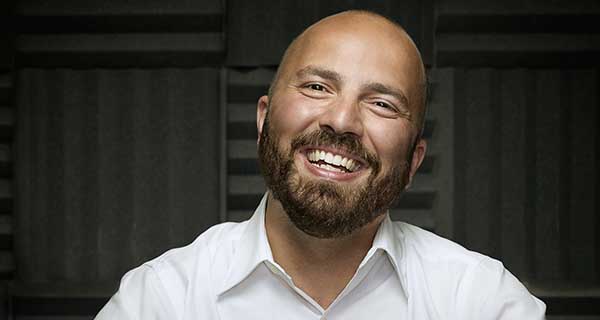Ernest Barbaric is a digital marketing strategist at Ernest Media, lead designer and instructor for digital marketing strategy at the Canadian Marketing Association and founder of the Social Media for Business program at Calgary’s Mount Royal University.

Ernest Barbaric
What’s your feel about how businesses today have used social media to better their bottom line?
Barbaric: Social ROI (return on investment) is one of the top challenges for marketers. Sixty per cent of small businesses owners are not able to track ROI from their social media efforts and I believe that is largely due to a lack of focus. Having clear objectives for your social media efforts will help tremendously in tracking and generating ROI / ROE (return on equity).
Even asking a simple question like “What are we using Twitter for?” will help create some clarity. The keys to success with social media are focus, consistency, and engagement. Businesses that can deliver on all three see improvements in awareness, conversion, and retention (the bedrocks of marketing). For example, Shaw uses Twitter to enhance customer service, which helps reduce waiting times and improve customer experience. It likely also creates a reduction in call centre costs, and improves retention (I can confirm this from personal experience) — both of which contribute to the bottom line.
What is the biggest thing businesses fail at when it comes to social media?
Barbaric: This could be a large list spanning from using social media as a broadcast medium to not dedicating time and financial resources to make social work. If we were to boil it down to one core issue (outside of clear objectives) – in my opinion, it would be the human element.
Businesses sometimes have to remember that real humans are on the other side of the screen. That means dialing up the “social” in social media. Specifically, responding to customer inquiries, commenting on their posts, and creating social content that is valuable, and/or entertaining for their specific target audience. For an excellent example, have a look at Soul Cycle. Their social team creates challenges for their audience, regularly engages in conversations, and maintains a positive and inspirational theme in their messaging.
What are the best platforms for businesses to use in social media?
Barbaric: At the risk of sounding vague, the answer is it depends. Let me clarify. Each social platform has unique advantages and disadvantages. Businesses need to be clear on who they wish to connect with, as different platforms attract different users.
Then we need to consider available time and resources as well as their unique strengths (e.g. entertaining staff members would do great on Instagram Stories, female skewed retail may lean toward Facebook, and technical thought leadership may do better on LinkedIn).
On top of that, businesses should be aware of the shift from public to private spaces. Messaging apps like FB Messenger, WhatsApp, WeChat have over five billion monthly active users. So platform options are expanding beyond the usual suspects (Facebook, Twitter, Instagram, LinkedIn, YouTube, Pinterest). The key is to be present where your customers expect you to be, but don’t fall into the trap of spreading too thin.
Pick one or two channels, and focus on delivering a great experience for your audience. For my own business, I’m focusing on LinkedIn.
Can social media be used for all businesses or is it really a platform for certain industries to utilize?
Barbaric: I look at social media as playdough – it can be shaped and moulded into whatever you envision, as long as you are clear on your objectives and are willing to invest time and resources into making it work.
For example, Camp Brand Goods (a fantastic Calgary-based clothing retailer) uses Instagram to connect with their ideal target audience and generally adopt a lifestyle marketing approach. They engage in conversations with users, work with influencers, and have built a great online platform that helps them reach audiences worldwide.
McKinsey & Company (a global management consulting firm) uses Instagram to showcase their culture and connect with potential recruits. Two very different companies, with different objectives using the same platform for different purposes. It comes down to understanding the platform, knowing whether your audience is active on it, and being clear on what your goals are. At the end of the day, it’s about building relationships with customers one-on-one. That takes effort and long-term thinking.
What is the biggest trend you see these days when it comes to social media and business?
Barbaric: I see a lot of rapid change driven by technology. Augmented reality, virtual reality, artificial intelligence, voice and algorithms are the main drivers at this time.
In my opinion, businesses should consider adopting an agile and agnostic approach to social. That means testing new features when they become available, being aware of algorithm changes, frequently reviewing and revising social media and digital marketing strategies, focusing on owned platforms (like e-mail) and most of all paying attention to customers.
Social media can be a wonderful experience – to find people with similar interests, share ideas, and connect with each other. Brands that take the lead in thoughtfully making social a positive space without contributing to the noise will see an advantage.
Speed of engagement is another consideration. Customers expect brands to respond and engage quickly — and brands that invest in this aspect of social will also likely see wins. This is another area where AI could make a significant difference. For example, using a chatbot for initial response and then elevating the conversation to a human operator.
– Mario Toneguzzi
The views, opinions and positions expressed by columnists and contributors are the author’s alone. They do not inherently or expressly reflect the views, opinions and/or positions of our publication.



